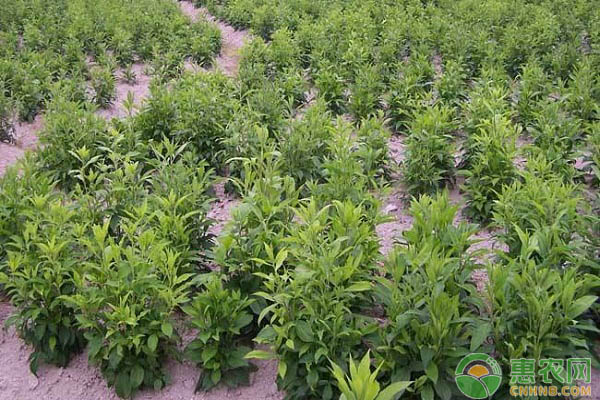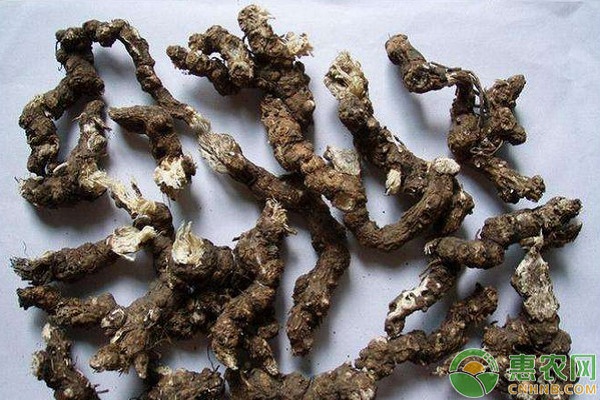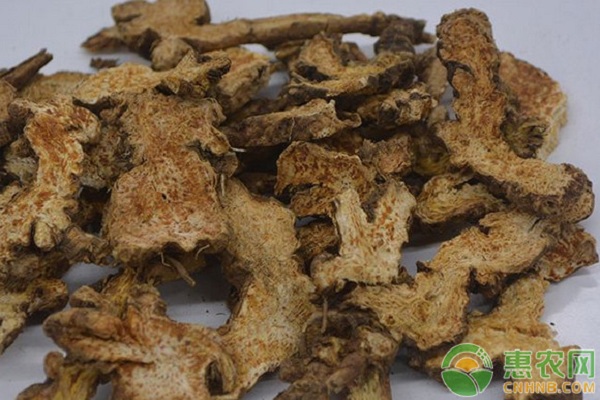How is atractylodes grown? There are many types of Atractylodes, the northern area is commonly known as the Northern Atractylodes, while the southern area is called the Atractylodes lancea. The color of Atractylodes is yellow and its medicinal value is good. Let's learn about the cultivation techniques of Atractylodes lancea and pest control.

1 Atractylodes cultivation and cultivation techniques
1.1 Site selection
Atractylodes lancea is a herbaceous plant with high medicinal value and prefers to grow in a sunny environment, especially in the mountains and hills. The minimum temperature needs to be above 15 °C, but below 22 °C. First, select the seedlings for Cangshu, and choose a place with a higher altitude and a cooler temperature. The soil in this area is fertile, the soil is loose, and the drainage is good. This is its planting place. The other area should be a transplanting place. The transplanting place should choose a sunny and warm sunny surface. The elevation of the terrain is not less than 500 m. It is best to choose terraces and the soil is sandy soil. Then, in the sloping land for planting, it is necessary to open a plot of more than 1 m wide. This plot needs to be located in a region with a large slope, so as to satisfy the drainage effect of the vegetation, and then a ditch with a ridge width of 30 cm is used for watering. If you want to plant in autumn and winter, you need to take measures to turn the fields; and the cultivated land planted in spring does not need to turn the field too frequently, only use 1 or 2 times, but pay attention to the prevention and control of pests and diseases, and loosen the soil.
1.2 Seed Selection and Processing
When selecting Atractylodes seeds, you should carefully select the seeds that are full of particles and bright colors, and the seeds are not affected by pests and diseases. Because good seeds can produce high quality seedlings, lay the foundation for high quality Atractylodes. Atractylodes chinensis seeds have special habits and prefer to germinate in a lower temperature environment. After 15 days, the seedlings grow out. Soak the seeds with warm water before planting, and wait until the seeds grow white buds. When sowing seeds, it is also necessary to pay attention to the distance between the seeds. The plant spacing should not be too narrow and should be kept at 15 cm so as not to affect the nutrient absorption of the seedlings. A ditch is placed next to the seed for sowing. The ditch is 2 cm deep. After leveling the soil in the ditch, the seeds are scattered in the soil; the soil is covered with a layer of soil, and then the fertilizer or other nutrients are sprinkled. Cover the next layer of soil. Cover the top layer with shelter such as thatch to cover the sun and rain.
1.3 seedbed management
After the germination of Atractylodes chinensis, the seedlings are broken, and the top layer of thatch can be removed, and the weeds around are removed. If the seedlings are found to be ill, especially if there are worms and weak seedlings, they should also be removed to avoid affecting the absorption of nutrients from good seedlings. When the seedlings grow to a certain height, they need to set a line spacing for them again. At this time, the plant spacing should be controlled at 3 cm, and the water should be poured twice a day, once in the morning and in the evening. The amount of water should not be too much or too small. Seedlings have suitable moisture. At the same time, the use of fertilizer should not be neglected. If the seedlings are found to have yellowing, they should be immediately removed. If the weather is too hot, the temperature is too high. For example, in the case of drought, a cover can be placed to block the sunlight.

1.4 seedling winter management
Atractylodes is cold-resistant and anti-freezing, and the seedlings also have cold-resistant properties, so they can survive the winter, but the staff should be well prepared before the winter. For example, weeds can be removed from the seedlings and the soil can be re-formed to protect the roots of the seedlings. When it starts to germinate in February, it needs to be transplanted in March. A reasonable grasp of time can make the operation safer and more convenient. During the operation, be careful not to touch the roots of the plants and avoid injury. When planting, it is necessary to distinguish the seedling level and plant separately.
1.5 Field Management
Field management is carried out in 3 steps: the first step is weeding measures. Weeding needs to follow a certain time rule, and it is carried out in the summer of each year. The specific time is from May to July. Before weeding, we must first loosen the soil. In the process of operation, we must be extremely careful. In a certain order, do not hurt the roots. After the soil is completed, the soil around the plant needs to be replanted. The second step is topdressing. Topdressing is mainly for the application of fertilizer. In the morning, it should be applied with nitrogen fertilizer. Specifically, it is to spread nitrogen fertilizer every morning in the morning of April, which can promote the rapid and healthy growth of seedlings; the second large fertilization period It is from May to August every year. At this time, the nitrogen fertilizer is planted to make the plants more flourishing, because it is in the bud stage of the plant; the third fertilizer application requires different fertilizers - potassium fertilizer, because July is During the reproductive period of Atractylodes chinensis, a large amount of nutrients are needed for supplementation at this time; the fourth fertilizer is superphosphate. This is the flowering period of Atractylodes lancea. It needs external fertilization, supplemented with potassium fertilizer. The purpose of this is to increase the rhizome. Increase the accumulation of nutrients. The last step is to pick the flower buds. When Atractylodes grows flower buds, it needs to be manually removed, choose sunny sunny days, pick buds in turn, avoid touching the roots during the picking process, leaving only the top flower buds, and the rest are removed.

2 Disease prevention
In high temperature weather, the incidence of Atractylodes is higher. Atractylodes L. is mainly affected by diseases such as iron leaf disease, blight, and chalk disease. Although these are common plant diseases, once Atractylodes sinensis is infected with pests and diseases, it is not easy to treat. It is possible to adopt a rotation system. In addition, a ditch can be opened beside the plant to not only water, but also to discharge waste water and sewage. Before soaking the seeds, in addition to warm water, it can also be soaked with syrup. The specific syrup is carbendazim. To achieve the purpose of prevention from sowing; after planting the sacred, in addition to applying fertilizer, some will choose to spray the appropriate amount of pesticides, but the sprayed pesticides can not be highly toxic, which not only harms the plants, but also harms the human body. health.
3 harvest
After the previous year, sowing and planting the atractylodes, until the second year of October, you can harvest the atractylodes. For the excavation of Atractylodes, the part of the excavation is the stem of Atractylodes chinense. It is necessary to cut the strongest part, leaving the next year to continue sowing, and the rest is the tuber. Next is the cleaning process, choose to clean the sun, the tuber is split into two halves, the two halves should not be too small, and then naturally dry, the temperature of the drying is kept above 30 °C. Always flip it so that the tubers are all dry.
The above is the cultivation technique of Atractylodes chinense. Farmers who want to grow this variety can come to Huinong.com to learn about planting techniques!
Reagent Bottle,Clear Reagent Bottle,Clear Glass Reagent Bottle,Pp Cap Reagent Bottle
Yancheng Rongtai Labware Co.,Ltd , https://www.rongtailab.com